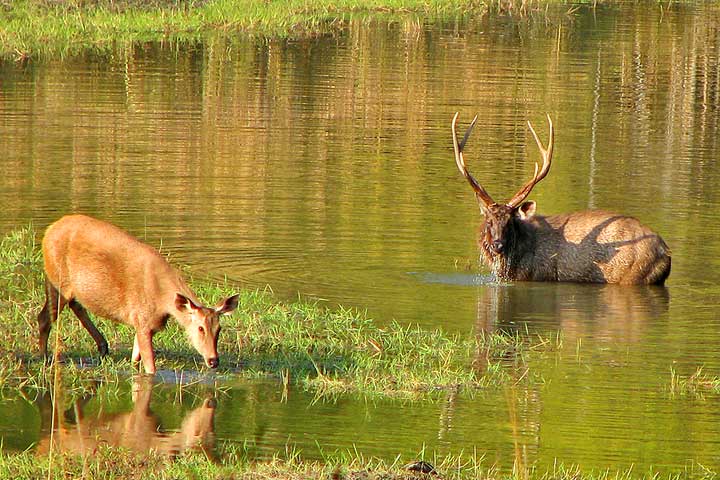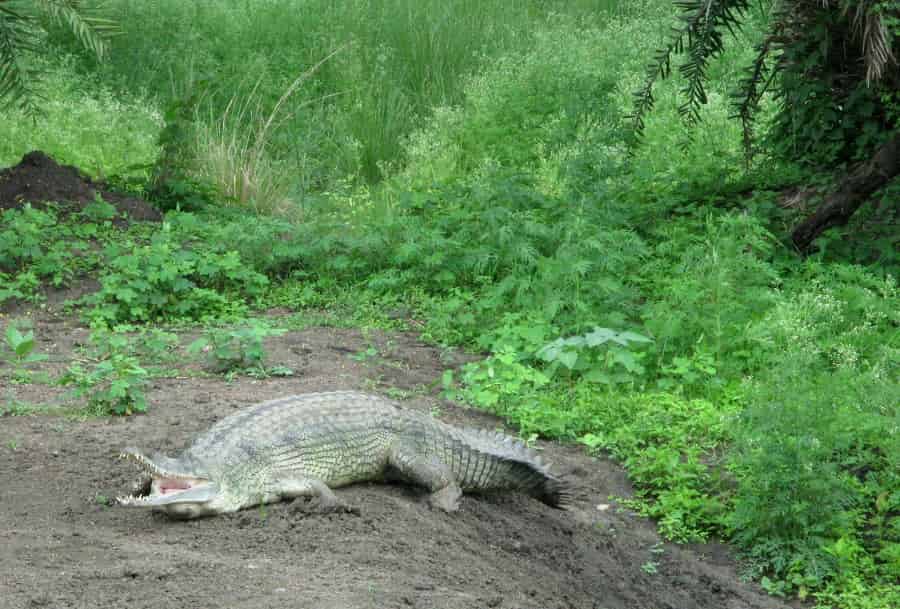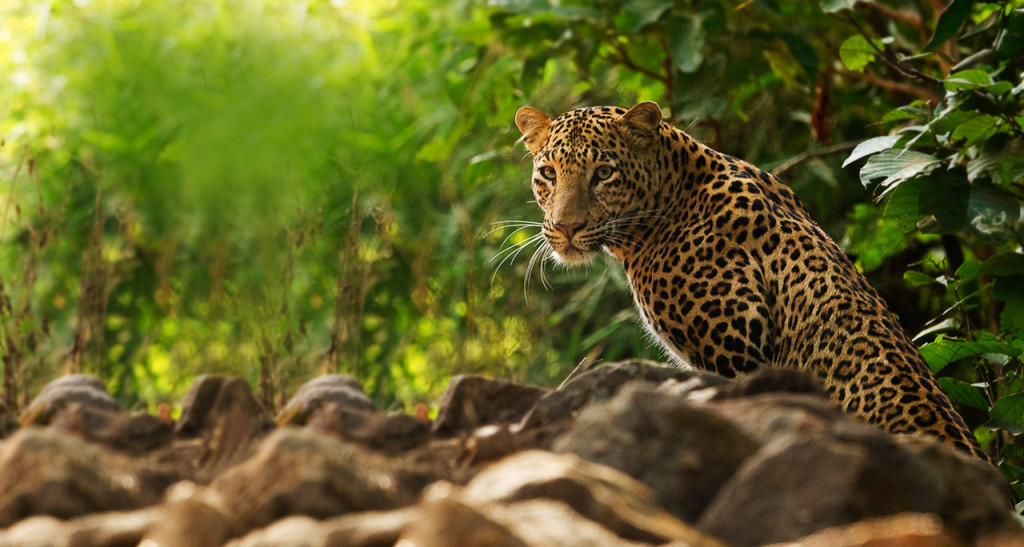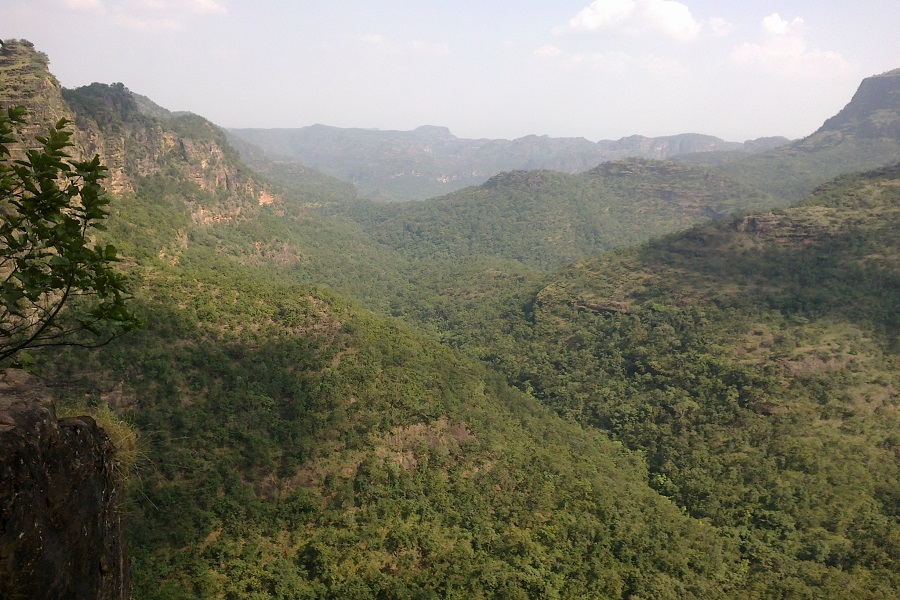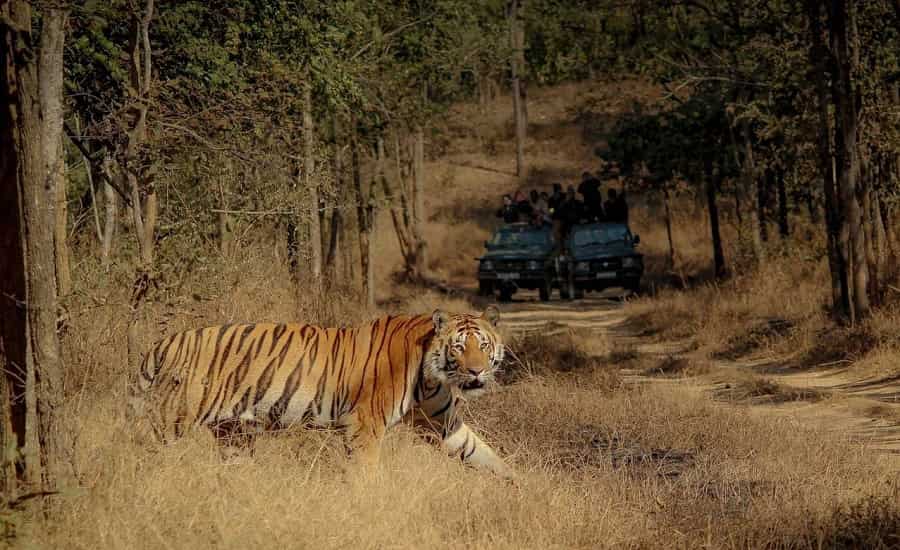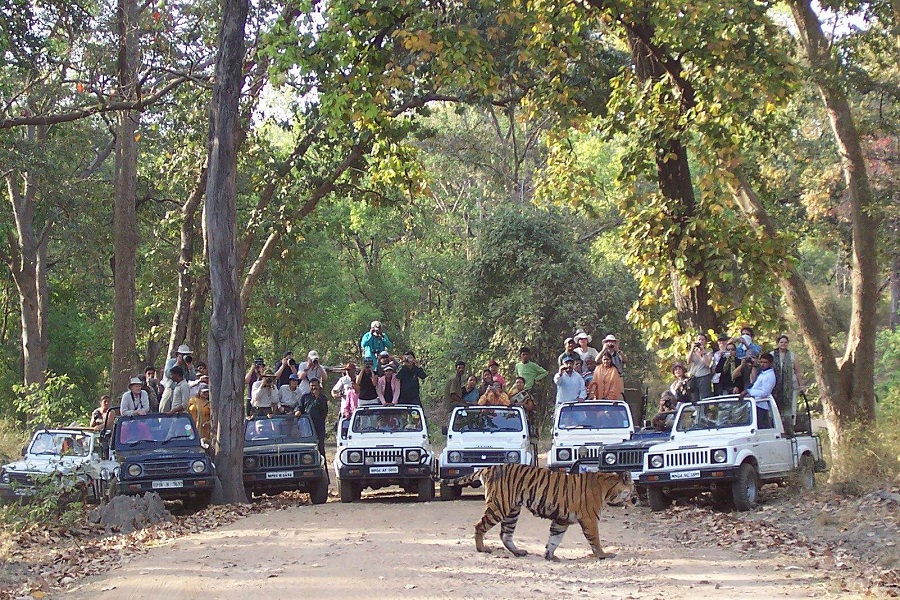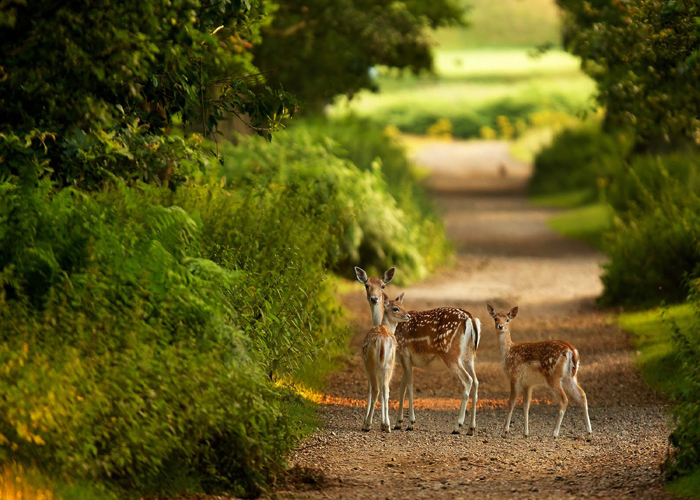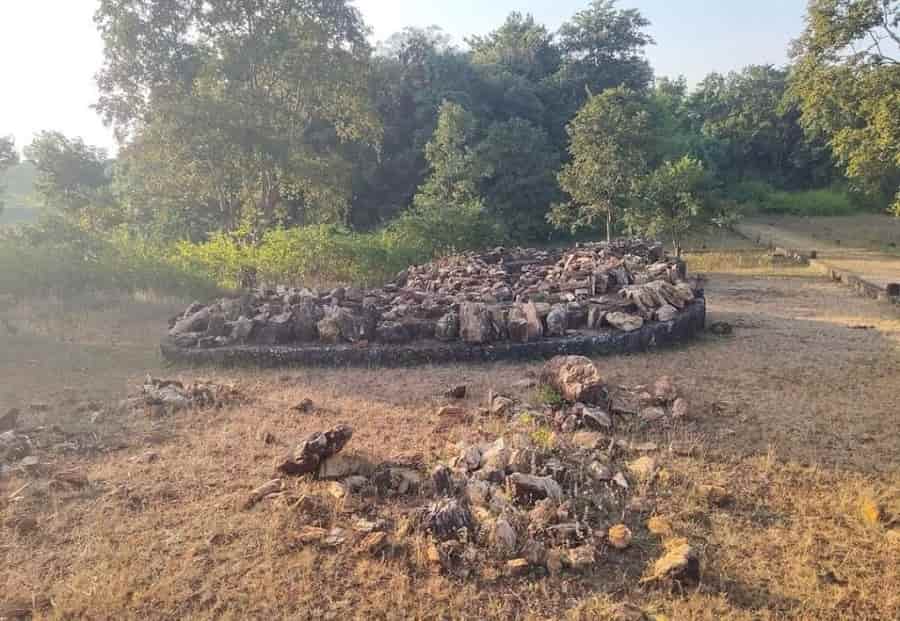The National Parks of Madhya Pradesh
Madhya Pradesh, often referred to as the “Heart of India,” boasts an impressive collection of national parks, each showcasing the state’s rich biodiversity and diverse ecosystems. With a total of eleven national parks covering an area of 4349.14 square kilometers, these protected areas play a crucial role in wildlife conservation and ecological balance. This guide provides an in-depth look at each of these parks, highlighting their unique features, flora, fauna, and conservation significance.
1. Kanha National Park
Location: Mandla and Balaghat districts
Area: 941.793 sq km
Kanha National Park, established in 1955 and designated as a tiger reserve in 1974, is one of the largest and most renowned wildlife sanctuaries in India. Situated in the Maikal range of the Satpura hills, the park’s landscape is characterized by lush green forests, rolling meadows, and expansive grasslands. The primary vegetation includes Sal and mixed deciduous forests, providing an ideal habitat for a diverse range of species.
Flora and Fauna: Kanha is celebrated for its successful conservation of the Hard Ground Barasingha, a deer species found exclusively in this park. The park’s wildlife includes Bengal tigers, leopards, Indian wild dogs (dholes), sloth bears, and various herbivores such as the gaur and sambar deer. The park also hosts over 300 species of birds, including the endangered Crested Hawk-Eagle and the beautiful Painted Stork.
Key Attractions: Kanha’s scenic beauty and rich biodiversity make it a popular destination for wildlife enthusiasts. The park’s various zones, such as Kisli, Mukki, and Sarhi, offer different wildlife viewing experiences. The Kanha Museum and the park’s dedicated research efforts provide valuable insights into the region’s ecology.
- Check out: Madhya Pradesh Tourism Packages
2. Kuno National Park
Location: Sheopur district
Area: 748.761 sq km
Kuno National Park, established in 1981, is a testament to India’s efforts to restore its historic wildlife. The park’s diverse landscape includes grasslands, dense forests, and riverine areas, with the Kuno River flowing through it, dividing the park into two distinct regions. In September 2022, the park gained international attention with the relocation of 12 cheetahs from South Africa, part of a major conservation initiative aimed at reintroducing the cheetah to India after its extinction in 1948.
Flora and Fauna: The park supports a variety of wildlife, including leopards, jackals, and chinkaras (Indian gazelles). The restoration project aims to reestablish the populations of all major feline species historically found in the park, including the Asiatic lion, which once roamed the region. The diverse ecosystem is also home to several bird species and reptiles.
Key Attractions: The ongoing cheetah reintroduction project is a major draw, and the park’s diverse habitats offer opportunities for observing various wildlife species in their natural settings. The Kuno River and its surrounding areas enhance the park’s biodiversity.
3. Panna National Park
Location: Panna and Chhatarpur districts
Area: 542.66 sq km
Panna National Park, situated in the Vindhya Hills, is renowned for its stunning landscapes, which include plateaus, gorges, and the Ken River that winds through the park. Established in 1981 and declared a tiger reserve in 1994, the park faced significant challenges in the early 2000s but has since seen a successful revival of its tiger population.
Flora and Fauna: The park’s diverse flora includes teak and dry deciduous forests, with vegetation that supports a variety of wildlife. Key species include Bengal tigers, leopards, wild dogs, sloth bears, and various deer species. The park is also home to numerous bird species, including the white-necked stork and various vultures.
Key Attractions: Panna National Park offers picturesque landscapes and opportunities for wildlife viewing, particularly around the Ken River. The park’s restoration efforts have been highly successful, making it a model for conservation.
- Suggested Tour: Madhya Pradesh Wildlife Tour Packages
4. Satpura National Park
Location: Narmadapuram district
Area: 528.729 sq km
Satpura National Park, established in 1981 and designated as a tiger reserve in 1999, is located south of the Narmada River. The park’s varied terrain includes hills, valleys, and dense forests, making it a unique and ecologically rich area. The park’s designation as the first biosphere reserve in Madhya Pradesh highlights its significance in conservation.
Flora and Fauna: The park is home to several species of wildlife, including Bengal tigers, Indian giant squirrels, and the elusive leaf-nosed bat. The diverse vegetation includes teak forests and sal trees, providing habitats for a range of animals and birds. Notable species include the Indian skimmer and various hornbills.
Key Attractions: Satpura’s varied landscapes and rich biodiversity offer a unique wildlife experience. The park’s remote location and lesser crowding compared to other reserves provide a more intimate wildlife viewing experience.
5. Sanjay National Park
Location: Sidhi district
Area: 464.643 sq km
Sanjay National Park, also known as Sanjay-Dubri National Park, is renowned for its historical significance and rich wildlife. The park was divided when Chhattisgarh was established, with the northern portion becoming Guru Ghasidas National Park.
Flora and Fauna: Sanjay National Park is home to tigers, leopards, and various other species such as gaur and wild boar. The park’s habitat includes Sal forests and grasslands, providing diverse environments for wildlife. The park’s historical significance includes the presence of the famous white tiger Mohan, who was born here and contributed to the global population of white tigers.
Key Attractions: The park’s rich history and diverse wildlife make it a unique destination. The historical connection to white tigers adds an extra layer of interest for visitors.
6. Bandhavgarh National Park
Location: Umaria district
Area: 448.842 sq km
Bandhavgarh National Park, established in 1968, is known for its high density of Bengal tigers, making it one of the best places in India to spot these majestic animals. The park’s landscape includes hills, valleys, and grasslands, with the Bandhavgarh Fort located within the park boundaries.
Flora and Fauna: Bandhavgarh’s diverse ecosystem supports a high population of tigers, leopards, and various other mammals, including wild boars and deer. The park also boasts a rich birdlife, with over 260 species recorded. The flora includes Sal forests, bamboo, and a variety of other trees and shrubs.
Key Attractions: The park’s historical fort and high tiger density make it a popular destination for wildlife enthusiasts. The diverse landscape provides excellent opportunities for wildlife photography and observation.
7. Madhav National Park
Location: Shivpuri district
Area: 375.23 sq km
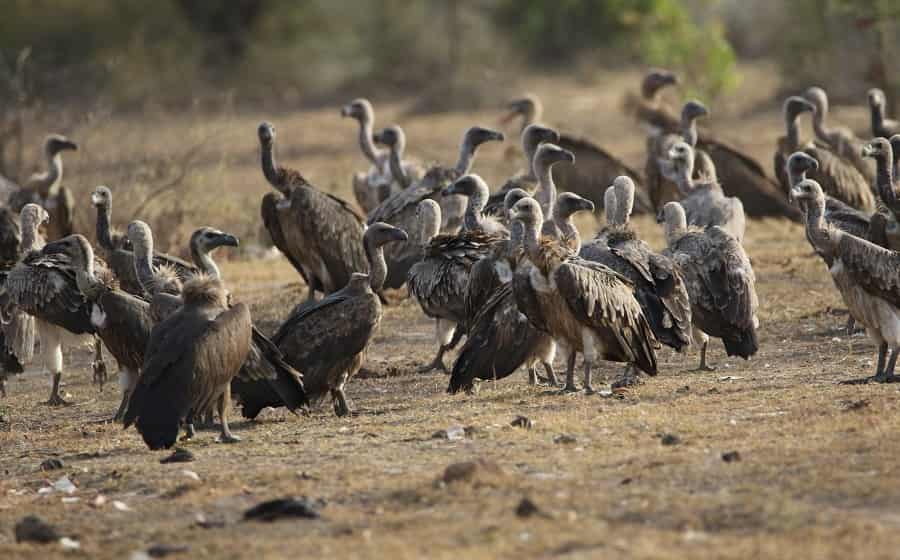
Madhav National Park, established in 1958, is located in the central highlands of India and is known for its diverse habitats, including valleys, hills, and lakes. The park’s key water bodies, Sakhya Sagar and Madhav Sagar, are crucial for supporting its wildlife.
Flora and Fauna: The park is home to various species, including Nilgai, Chinkara, and Chowsingha. It also supports leopards, jackals, wild dogs, and marsh crocodiles. The vegetation includes tropical dry deciduous forests and thorny scrublands.
Key Attractions: The lakes within the park are notable for crocodile sightings, and the park’s varied habitats offer opportunities for observing different wildlife species.
8. Pench National Park
Location: Seoni and Chhindwara districts
Area: 292.857 sq km
Pench National Park, established in 1975, is known for its diverse forest types and historical significance. The park’s landscapes, which include tropical wet and dry deciduous forests, are featured in Rudyard Kipling’s “The Jungle Book.”
Flora and Fauna: The park supports a wide range of species, including Bengal tigers, leopards, and wild dogs. It also hosts a variety of birds and herbivores such as chital and sambar. The park’s rich flora includes teak, mahua, and tendu trees.
Key Attractions: The park’s association with “The Jungle Book” and its diverse wildlife make it a popular destination. The varied forest types provide different experiences for visitors.
9. Van Vihar National Park
Location: Bhopal
Area: 4.452 sq km
Van Vihar National Park, established in 1979, is located in the capital city of Madhya Pradesh. The park’s small size belies its importance in wildlife conservation and education.
Flora and Fauna: The park supports a variety of species, including tigers, leopards, and migratory birds. The flora includes trees like kusum, ber, and tendu, providing habitats for the park’s diverse wildlife.
Key Attractions: Van Vihar’s location in Bhopal makes it easily accessible, and its conservation efforts are a model for urban wildlife management. The park’s mixed vegetation and wetland areas offer unique viewing opportunities.
10. Dinosaur Fossil National Park
Location: Near Shivpuri
Area: 0.897 sq km
Dinosaur Fossil National Park, established in 2011, is notable for its paleontological significance. The park’s small size encompasses a range of ecosystems, including lakes and forests, which are rich in fossils.
Flora and Fauna: The park’s fauna includes chinkara, spotted deer, and leopards, while the flora features a variety of trees and shrubs. The fossil deposits provide valuable insights into the region’s ancient biodiversity.
Key Attractions: The park’s focus on paleontology and its fossil exhibits make it a unique destination for those interested in ancient life forms.
11. Mandla Fossil National Park
Location: Mandla district
Area: 0.27 sq km
Mandla Fossil National Park, established in 1983, is the smallest of the national parks in Madhya Pradesh. Despite its size, it is significant for its rich fossil deposits, which date back approximately 60 million years.
Flora and Fauna: The park’s fauna includes tigers, leopards, and various other species, while the flora includes deciduous trees and shrubs. The fossil deposits provide insights into the region’s ancient plant and animal life.
Key Attractions: The park’s fossil sites offer a glimpse into prehistoric life, making it a unique destination for paleontology enthusiasts.
Madhya Pradesh’s national parks are a testament to the state’s commitment to wildlife conservation and ecological preservation. Each park offers unique experiences and opportunities to explore India’s diverse natural heritage. From the dense forests of Kanha to the historic significance of Sanjay National Park, these protected areas are crucial for preserving India’s rich biodiversity and providing valuable research opportunities.
- Suggested to Read: Top 12 Tourist Places of Madhya Pradesh
